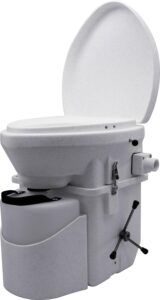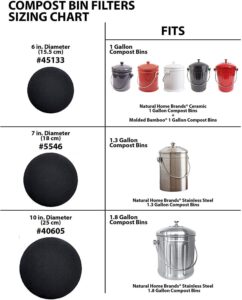In “How Do I Use Compost In Vegetable Gardens?”, we embark on an exciting journey to unlock the secrets of enriching our vegetable patches with compost. Together, we will explore the step-by-step process of incorporating this natural treasure into our soil, ensuring our plants thrive with robust health and abundant harvests. From selecting the right compost to understanding its many benefits, we’ll cover everything we need to create a flourishing garden brimming with fresh, homegrown produce. Have you ever wondered how to use compost in vegetable gardens to maximize plant health and yield? Well, you’re in the right place! Compost, often referred to as “black gold” by gardening enthusiasts, can transform your vegetable garden into a thriving paradise.
What is Compost?
Before we dive into the application process, let’s understand what compost is. Compost is decomposed organic material made up of kitchen scraps, yard waste, and other biodegradable materials. When these materials break down, they create a nutrient-rich soil conditioner that’s invaluable for vegetable gardens.
Benefits of Using Compost
Why should we bother with compost? Let’s explore some key benefits:
- Improves Soil Structure: Compost aids in creating a crumbly soil texture, which improves aeration and helps roots grow more easily.
- Boosts Nutrient Levels: It provides essential nutrients like nitrogen, phosphorus, and potassium, which are crucial for plant growth.
- Enhances Water Retention: Soils enriched with compost can retain moisture more effectively, reducing the need for frequent watering.
- Encourages Beneficial Microorganisms: Compost promotes a healthy soil ecosystem by fostering beneficial bacteria and fungi.
- Reduces Waste: By composting kitchen and garden waste, we recycle organic matter and reduce landfill contributions.
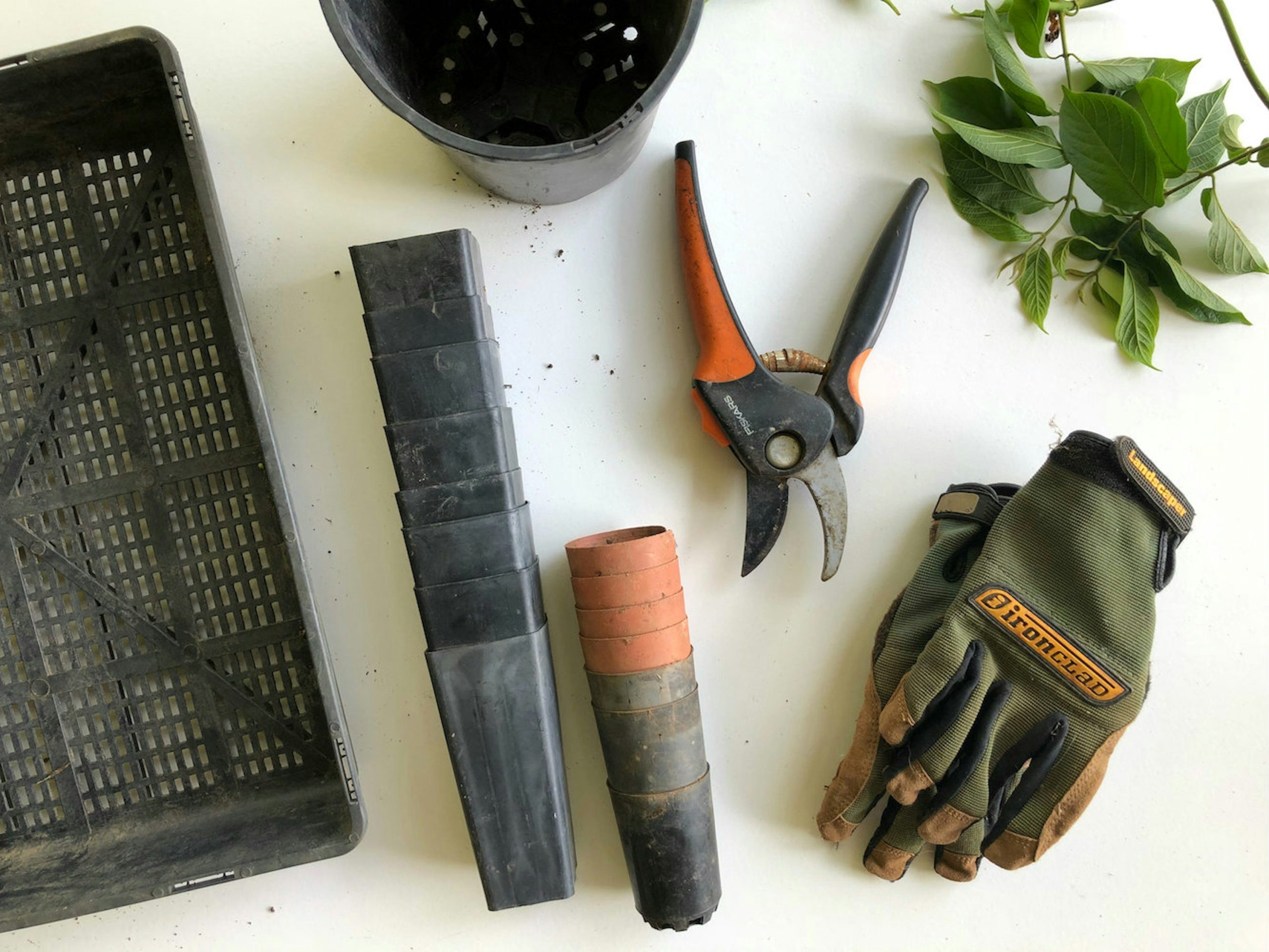
Types of Compost
There are several types of compost we can use in our vegetable garden, each with unique characteristics:
| Type of Compost | Characteristics |
|---|---|
| Homemade Compost | Made from household and garden scraps |
| Mushroom Compost | Rich in organic matter and trace elements |
| Manure-Based Compost | High in nitrogen, must be well-rotted |
| Vermicompost | Created using worms, rich in nutrients |
| Commercial Compost | Available pre-made, various nutrient profiles |
Homemade Compost
Homemade compost is a blend of kitchen scraps, yard waste, and other organic materials. It’s inexpensive because we make it from things we already have. However, it takes time to break down, requiring a compost bin and regular turning.
Mushroom Compost
Mushroom compost is a byproduct of mushroom farming. It’s packed with organic matter and essential trace elements. However, it can be high in soluble salts, so it should be used sparingly.
Manure-Based Compost
Manure-based compost is rich in nitrogen, making it excellent for leafy greens. It’s essential that manure is well-aged or composted to avoid burning plants with excessive nitrogen.
Vermicompost
Vermicompost is made using worms, specifically red wigglers. It’s incredibly rich in nutrients and beneficial microorganisms. However, establishing a vermicomposting system can be somewhat labor-intensive.
Commercial Compost
For those seeking convenience, commercial compost provides a ready-to-use option with specific nutrient profiles. The downside is it can be more expensive than homemade compost.
When to Apply Compost
Timing is key when it comes to applying compost in our vegetable gardens.
Pre-Planting
One of the best times to incorporate compost into our garden is before we plant. During this phase, compost enriches the planting beds and preps the soil for the growing season.
Growing Season
We can also apply compost during the growing season as a top dressing. This provides ongoing nutrition to our plants. Be mindful to avoid direct contact with plant stems to prevent mold and disease.
End of Season
After harvesting, adding a layer of compost helps replenish the soil for the next growing season. This post-harvest composting boosts soil structure and fertility.
How Do I Use Compost In Vegetable Gardens?
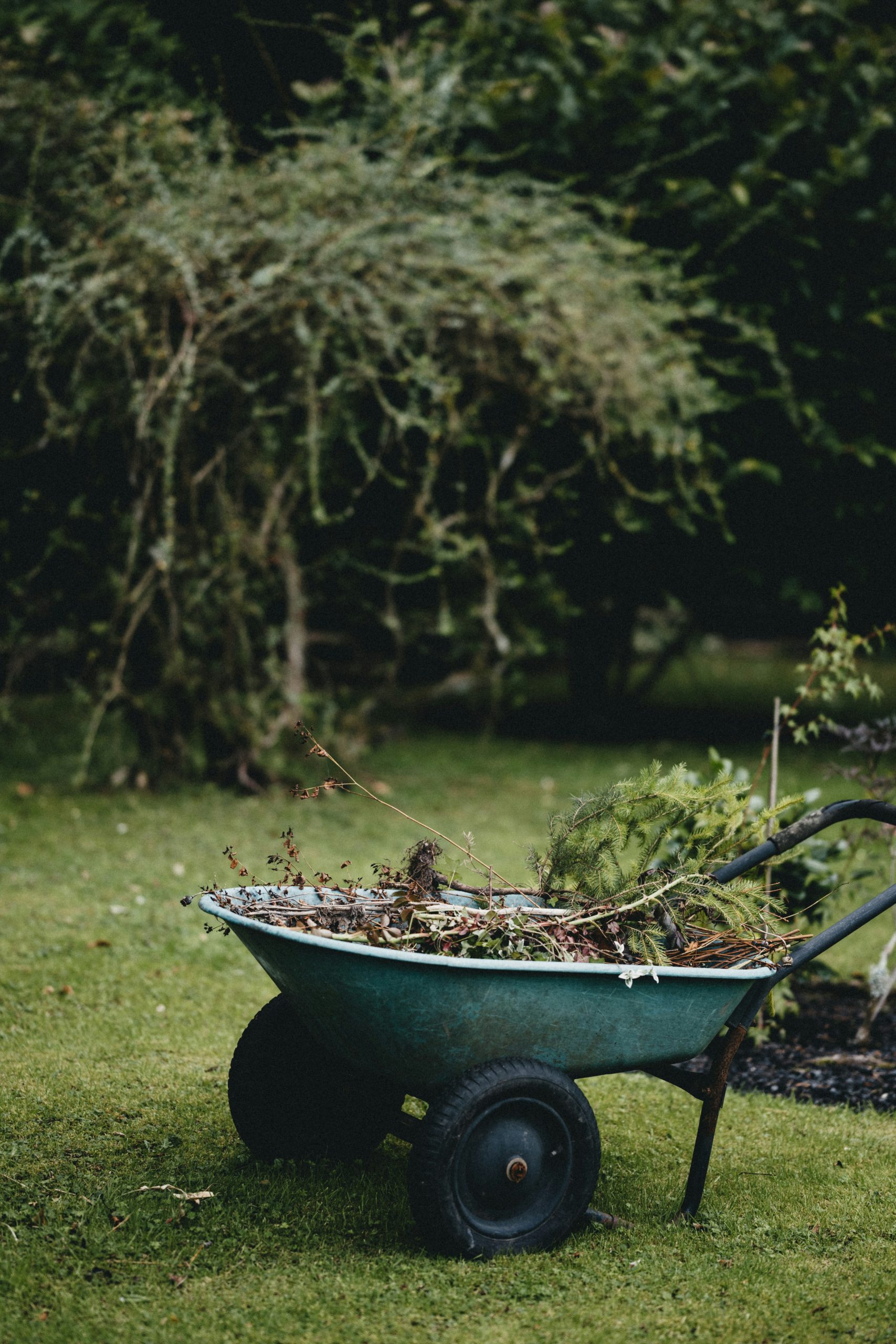
How Much Compost to Use
Using the right amount of compost ensures we don’t overwhelm our garden soil:
| Garden Area | Amount of Compost |
|---|---|
| Vegetable Beds | 2-3 inches of compost layered into the top 6-8 inches of soil |
| Containers | 25-30% compost mixed with regular potting soil |
| Top Dressing | A thin 1-2 inch layer around established plants |
Preparing the Soil
Proper soil preparation is essential for maximizing the benefits of our compost.
Testing the Soil
Before adding compost, we should test our soil to understand its current nutrient levels and pH balance. Soil tests help us know what amendments are necessary.
Incorporating Compost into Soil
For pre-planting applications, spread a 2-3 inch layer of compost on the soil surface. Using a garden fork or tiller, incorporate the compost into the top 6-8 inches of soil. This ensures that the compost reaches the root zone where plants can access the nutrients.
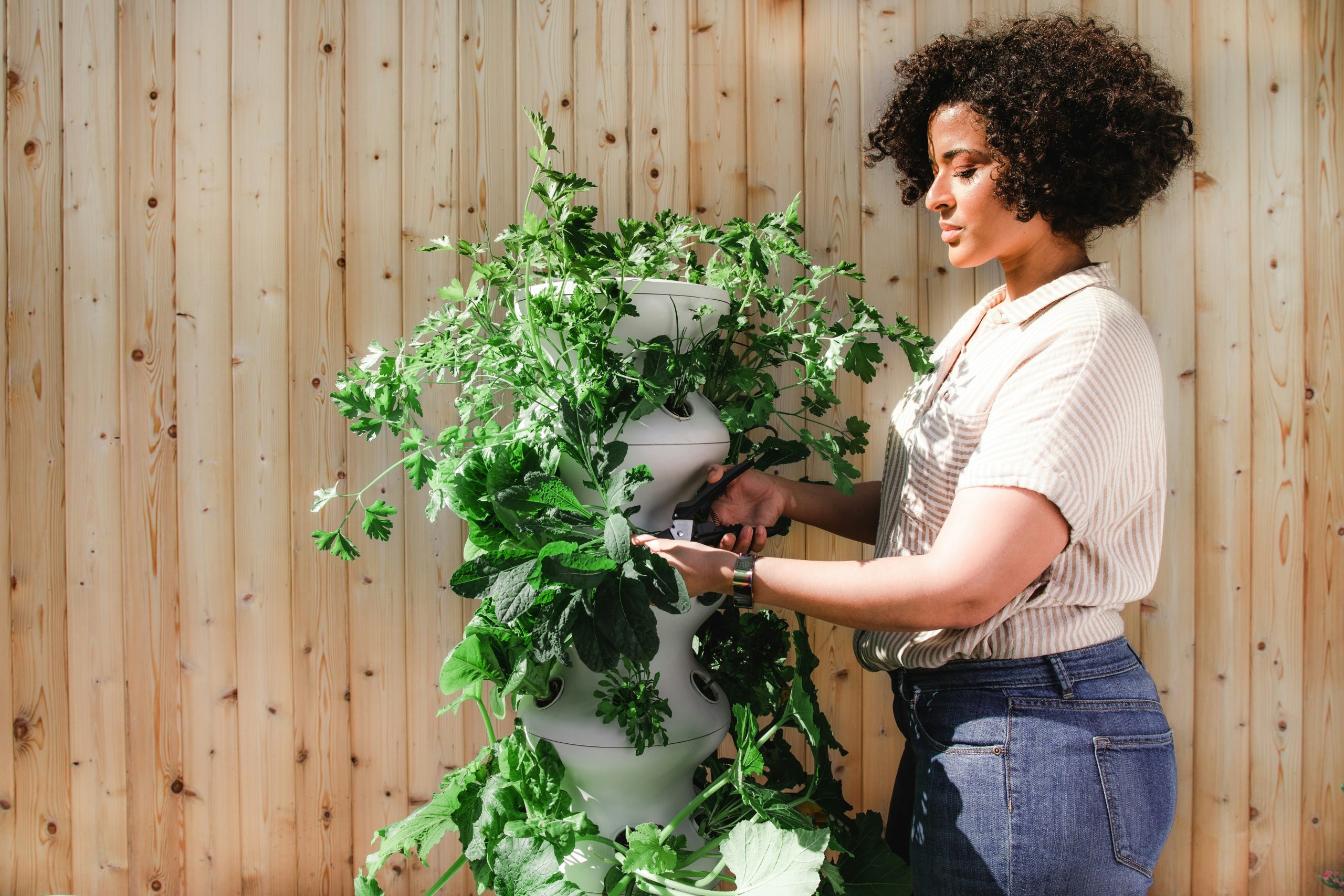
Types of Vegetables and Compost Requirements
Different vegetables have varying nutritional needs. Here’s a quick guide:
| Vegetable Type | Optimal Compost Use |
|---|---|
| Leafy Greens (Lettuce, Spinach) | High nitrogen compost for lush growth |
| Root Vegetables (Carrots, Beets) | Well-balanced compost for stable root development |
| Fruit-Bearing (Tomatoes, Peppers) | Phosphorus-rich compost for fruit production |
| Legumes (Beans, Peas) | Moderate compost; these plants fix their own nitrogen |
Mulching with Compost
Using compost as mulch is another effective gardening technique.
Benefits of Compost Mulch
Mulching with compost has several advantages:
- Weed Suppression: A layer of compost mulch helps keep weeds at bay.
- Moisture Conservation: It reduces evaporation, keeping our soil moist.
- Temperature Regulation: Mulch helps maintain a consistent soil temperature.
How to Apply Compost Mulch
Spread a 1-2 inch layer of compost around the base of our plants. Be careful to keep mulch away from plant stems to avoid rot.
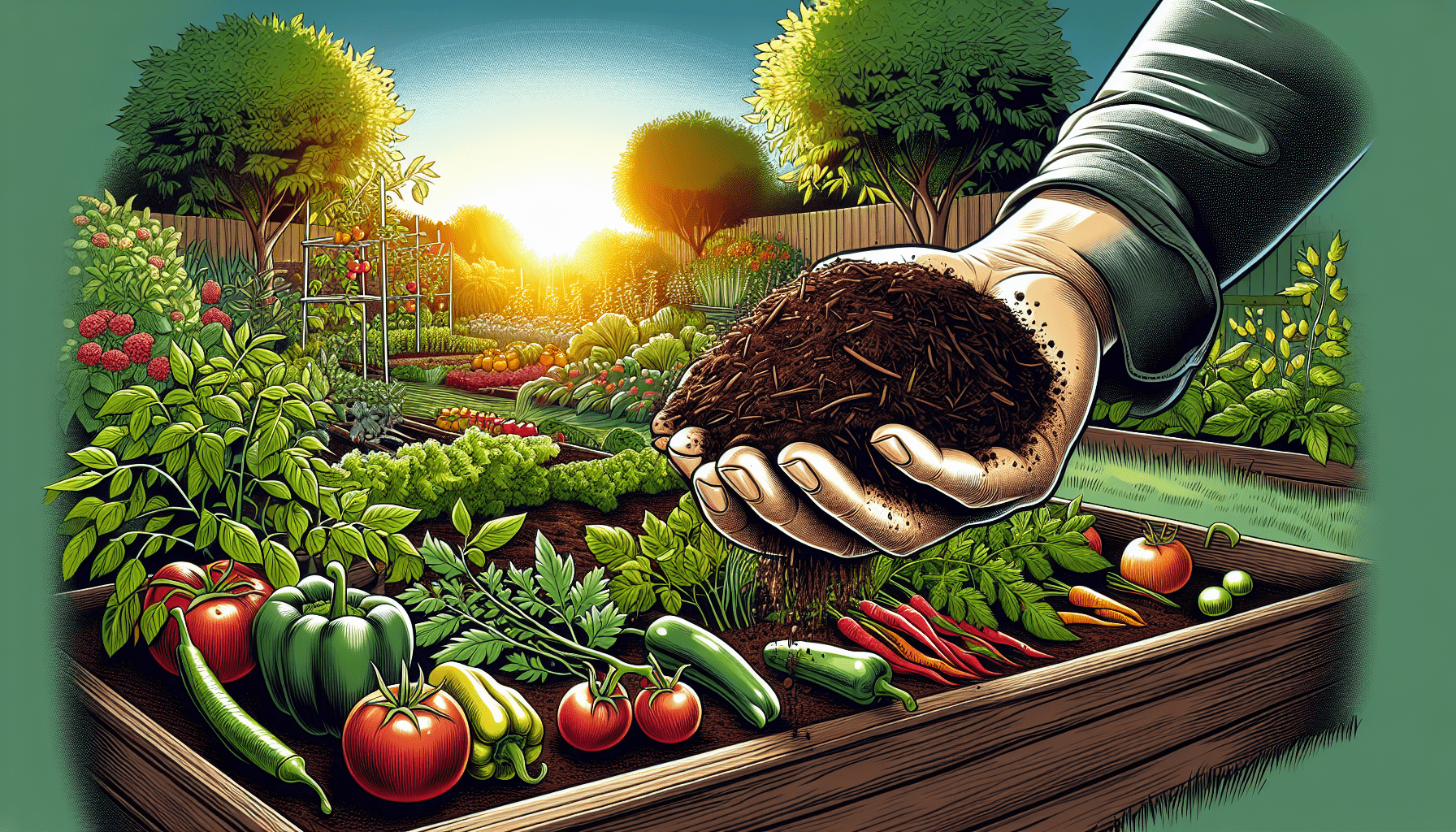
Making Our Own Compost
Creating our own compost is an empowering way to reuse kitchen and garden waste while preparing a valuable resource for our garden. Here’s a step-by-step guide:
Selecting a Composting Site
Choose a level, well-drained spot for our compost pile or bin. It should be easily accessible but not too close to our living space, as composting can produce odors.
Building the Compost Pile
Ingredients
We need a mix of “green” and “brown” materials.
| Green Materials | Brown Materials |
|---|---|
| Fruit and vegetable scraps | Dried leaves, straw, and paper |
| Coffee grounds | Cardboard |
| Grass clippings | Wood chips and sawdust (untreated) |
| Manure (non-meat eaters) | Garden trimmings |
Layering
Start with a base layer of coarse materials like straw or twigs for aeration. Alternate layers of green and brown materials, ensuring green layers are roughly one-third the thickness of brown layers. Finish with a layer of soil or finished compost.
Maintaining the Compost Pile
To speed up decomposition, turn our compost pile regularly, ideally once a week. Keep the pile moist but not soggy; it should feel like a wrung-out sponge.
Troubleshooting Common Issues
Sometimes composting doesn’t go as planned. Here are common problems and solutions:
| Problem | Solution |
|---|---|
| Bad Odors | Too much green material; add more brown material and turn the pile |
| Pile Not Heating Up | Add more green material or water if too dry |
| Attracting Pests | Avoid adding meat, dairy, or fatty foods |
Using Compost Tea
Compost tea is a nutrient-rich liquid derived from soaking compost in water. It’s an excellent way to provide plants with a quick nutrient boost.
How to Make Compost Tea
- Place a shovel full of compost into a large container or bucket.
- Add water in a 1:5 ratio (one part compost to five parts water).
- Stir the mixture daily for about a week.
- Strain the liquid through a fine mesh screen or cloth.
Applying Compost Tea
Water our plants with the strained compost tea, ensuring to soak the soil around the base of each plant. Avoid applying it directly to the leaves to prevent foliage burn.
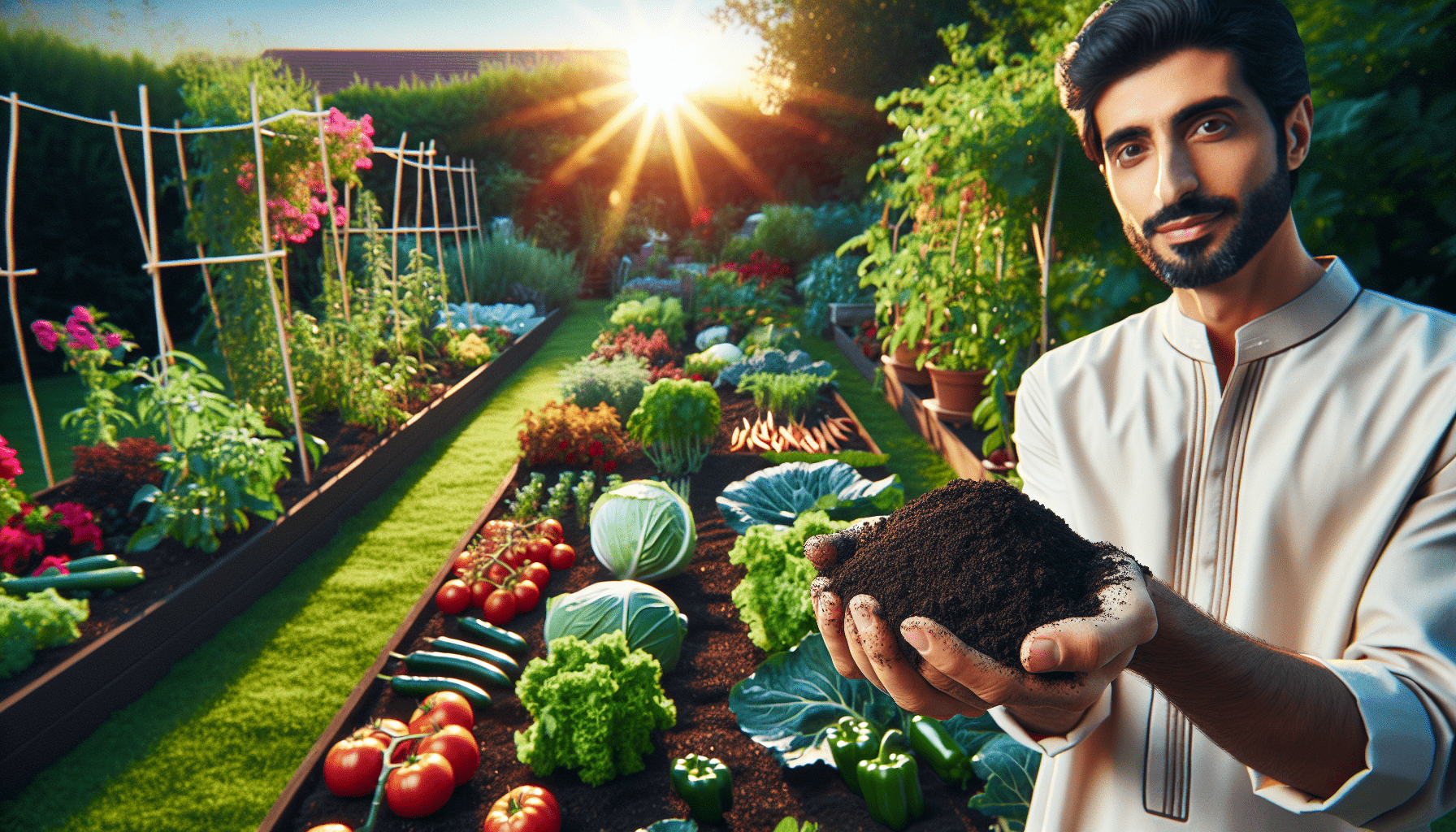
Potential Risks and How to Avoid Them
While compost is generally beneficial, there are some risks to be aware of:
Over-application
Too much compost can lead to excessive nutrient levels, which can harm plants. Always follow recommended application rates.
Contaminated Materials
Avoid adding diseased plants, pet waste, or chemically treated wood to our compost pile, as these can introduce harmful pathogens and toxins.
Pest Attraction
Using kitchen scraps like meat, fish, or oily foods in compost can attract pests. Stick to plant-based scraps only.
Building Soil Health Over Time
Improving soil health with compost is an ongoing process. By applying compost regularly, conducting soil tests, and rotating crops, we can enhance our garden’s productivity year after year.
Soil Testing and Amendments
Regular soil testing can help us gauge nutrient levels and pH balance, allowing us to adjust our compost application and add other necessary amendments.
Crop Rotation
Rotating crops helps prevent nutrient depletion and reduces soil-borne diseases. Plan a rotation schedule to ensure each plant family gets the best soil conditions.
Conclusion
Using compost in vegetable gardens is a game-changer. It improves soil structure, boosts nutrient levels, and promotes a healthy garden ecosystem. By understanding the types of compost, the right application timing, and the specific needs of our vegetables, we can make the most out of this natural resource. Moreover, making our own compost and utilizing techniques like compost tea and mulching further maximize our garden’s potential.
So, let’s get our hands dirty and start using compost to create the thriving vegetable garden of our dreams. Happy gardening!

